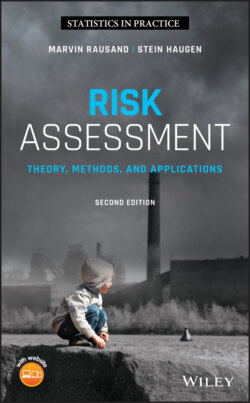Читать книгу Risk Assessment - Marvin Rausand - Страница 151
3.2.3.2 Step 3.2: Define Specific and Representative Events
ОглавлениеIn this step, we have to be more careful about what we include as events to be analyzed further. From the (often unorganized) list of identified hazards and events, we should specify a set of specific initiating or hazardous events to form the backbone of the risk analysis. Now, the definitions introduced in Chapter 2 help us in the screening process. We should not discard any hazards and events that are not included in the list of hazardous/initiating events, because they can be parts of accident scenarios or causes that we use in later steps in the risk assessment process.
From the generic lists, we may have identified “fire” as an event, but we now need to make this sufficiently specific, stating, for example, “fire in room X during daytime.” The specificity of the events must be balanced with the resources required to perform the analysis. More events typically require more time and resources to perform the analysis so we try to define representative events that can cover a range of more or less similar events.
In most cases, a screening of the identified events may be performed as part of this step. Events that are considered to have a very low probability of occurrence or are expected to have no or negligible consequences are usually screened out and not included for further analysis. This screening should be carefully documented.
